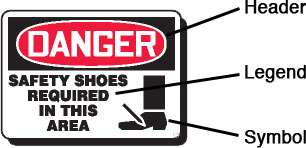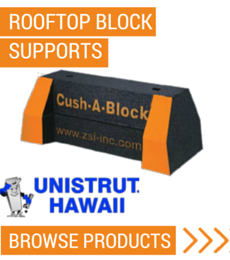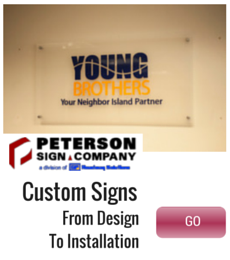Safety Signage General Information

ACCIDENT PREVENTION SIGNS & LABELS
The American National Standards Institute (ANSI Z535) and Occupational Safety and Health Administration (OSHA 29 CFR§ 1910.145) provide specifications, design, application, and use of header signs. These signs are intended to indicate potential, type, and degree of the hazard that may lead to accidental injury or property damage. They define specific hazards by conveying a clear and rapidly understood message.
ACCIDENT PREVENTION SIGN HEADERS
The OSHArecognized headers are the traditional styles, while the recent ANSI specified headers are becoming a recognized style for a new generation of signs.
Danger — Indicates an imminently hazardous situation which, if not avoided, will result in death or serious injury. This signal word is to be limited to the most extreme situations. The signal word Danger should not be used for property damage hazards unless personal injury risk appropriate to the level is also involved.
Warning — Indicates a potentially hazardous situation which, if not avoided, could result in death or serious injury. This signal word should not be used for property damage hazards unless personal injury risk appropriate to this level is also involved.
Caution — Indicates a potentially hazardous situation which, if not avoided, may result in minor or moderate injury. It may also be used to alert against unsafe practices that may cause property damage.
Notice — Indicates a statement of company policy directly or indirectly related to the safety of personnel or protection of property. This signal word should not be associated directly with a hazard or hazardous situation.
Safety First, Think, Emergency — Indicates general instructions relative to safe work practices, remind of proper safety procedures, and indicate the location of safety equipment.
Pressure Sensitive Vinyl— (EV) Polyethylene Plastic — (PTH) Perma Bond Aluminum — (PBA) |
CONTENT |
 |
Header |
Legend |
Symbol |



